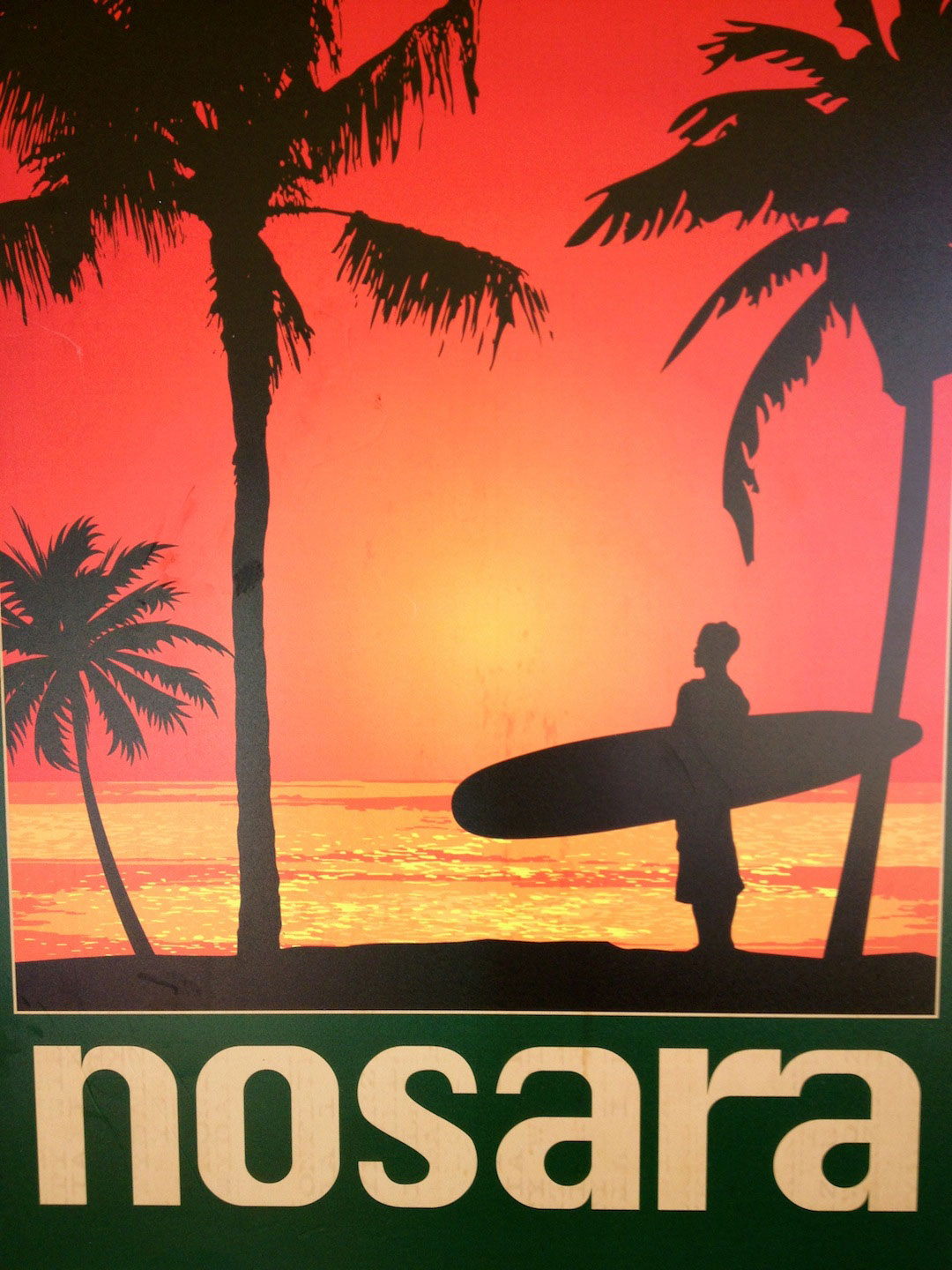
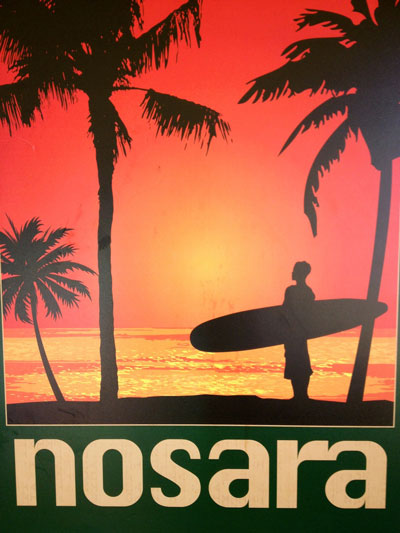


He places the dehydrated coconut wafer on the counter in front of him, then carefully draws on it with an eyedropper, creating a dark green rorschach of pure hash oil.
"Tell me, what is your intention?"
I'm confused by the question. It's the kind of thing I'd expect to hear from a father whose daughter I was about to keep out past curfew.
"My intention?"
"Yes, when you're using medicines, it's very important to have an intention."
In hindsight, it was a simple question, but I didn't have any premeditated spiritual intentions to share at the moment. I answered as honestly as I could:
"My intention is to eat the hash wafer and mellow out on the beach while watching the sunset."
The sunset at Ostional Beach in Nosara happened around 5:30 and was something to be seen: A long, clean stretch of unbroken black volcanic sand and the last rose-tinted rays of the sun dancing off the Pacific. To view this while stoned, that was my intention.
He smiles back at me, but the look on his face intimates failure. Either my answer isn't good enough or I've misunderstood something.
"It's okay. I'll prepare this with my intentions for you."
He was offering on my behalf. If he was willing to do the work, who was I to protest.
Standing over the table with his eyes closed, no doubt channeling the good vibes I failed to articulate, he adds additional dabs onto the wafer.
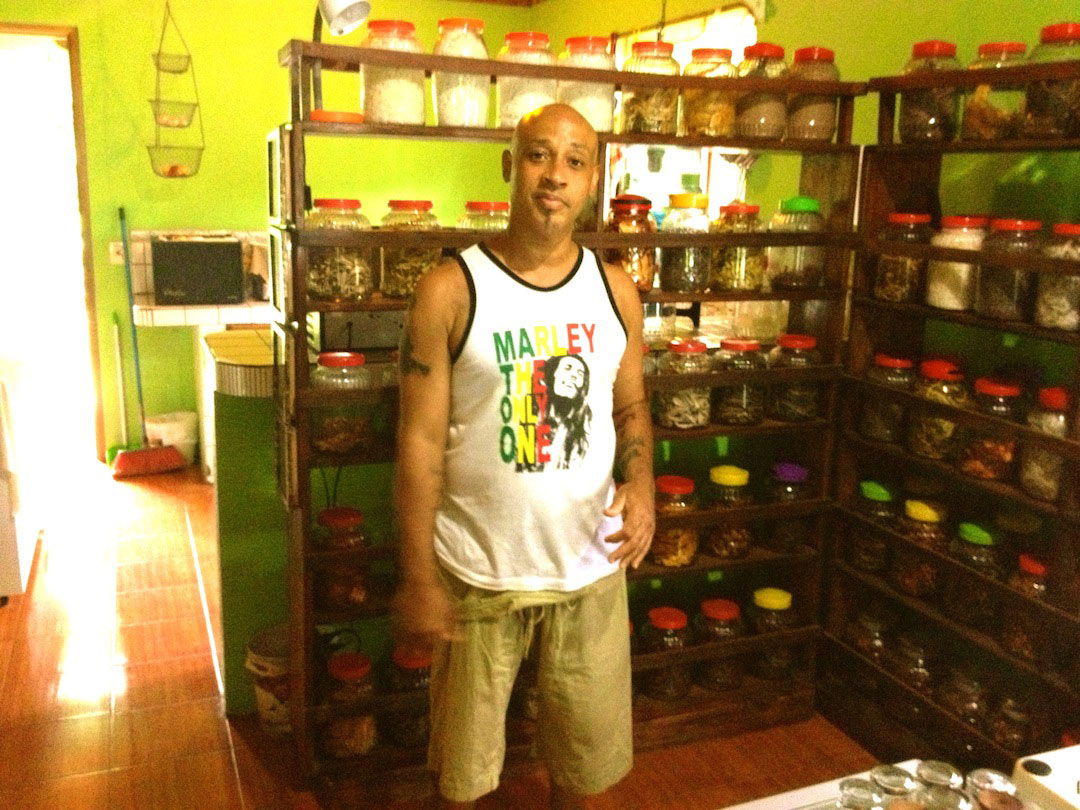

The man with the good intentions is Franklin. In another life, he was a Brooklynite who worked for Marriott, then the Long Island Rail Road. In 2000, after becoming disillusioned with the grind of New York City, he left the United States in favor of the simpler life in his parents' home country of Costa Rica. At present, he has re-invented himself as an organic farmer, raw foods expert and Rastafari spiritualist. In his home, which doubles as his storefront, he prepares tropical superfoods in a variety of raw forms — pastes, powders, syrups and oils. The majority of his offerings are coconut, cacao and banana, however he also grows some of the more exotic superfoods that you probably would only hear about at your local drum circle, like noni. He also occasionally sells medicines.
"Now it's an indica, so expect to get a reaction in your body. Remember, it's important when you're taking these to keep a positive intention and energy."
"Of course."
He presents me a small glass jar with a makeshift lid containing the wafers. I take it and add them to the other products I'd picked up: a vacuum-sealed bag of raw cacao nibs, three solid bars of cacao and one bag of shredded coconut.
"Hey Franklin, I almost forgot: Yuri told me to ask you about getting a microdose of Iboga."
I had only heard about Iboga a couple of times prior to my visit to Nosara. I knew that it was currently being used by desperate junkies in powerful, days-long treatments to help them kick the habit when all conventional methods failed. When it was mentioned to me that I might be able to get some from Franklin, I balked. I didn't come to Nosara to find myself or to lose my mind. However, it was brought to my attention by Yuri, a friend of Franklin's, that a microdose would provide me with an energetic and illuminating trip that would be nothing like the intense, hallucinatory sojourn I had imagined. So I decided to try it. I had taken drugs that promised far less before.
After explaining to me at length that he didn't sell Iboga to just anyone, Franklin slides me two caps of the powder wrapped in wax paper.
"Remember, you must have a very clear and positive intention before taking this."
I didn't come to Nosara to find myself or to lose my mind.
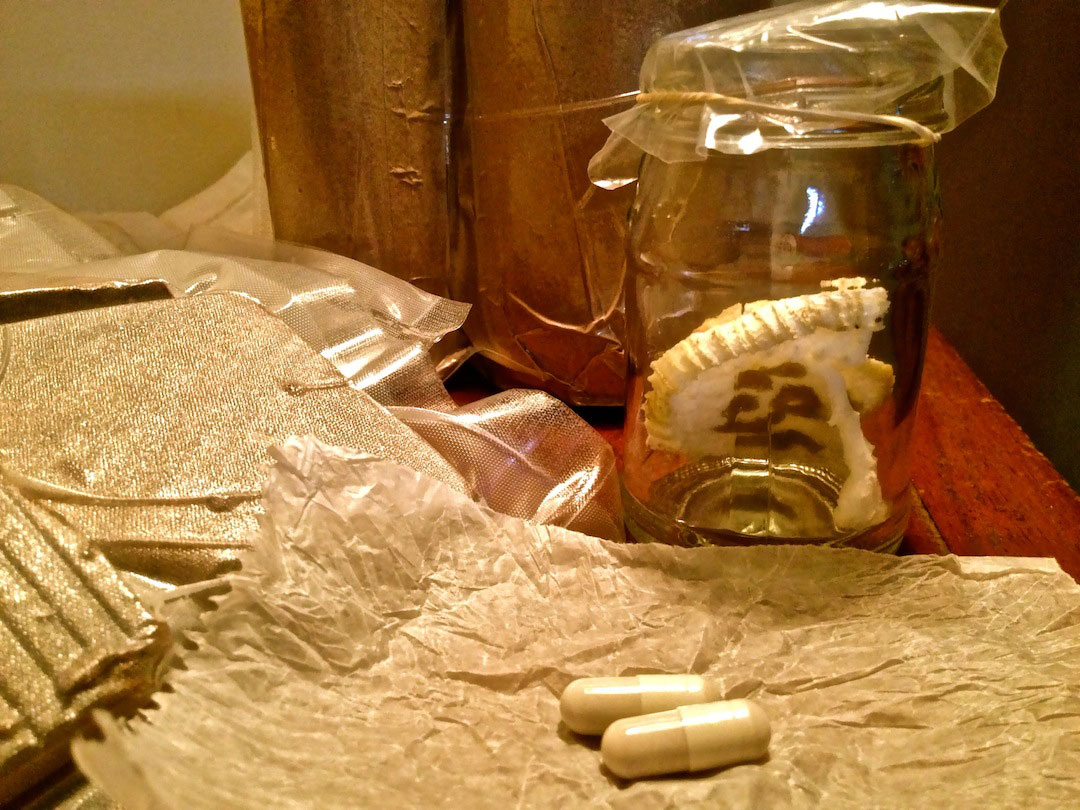
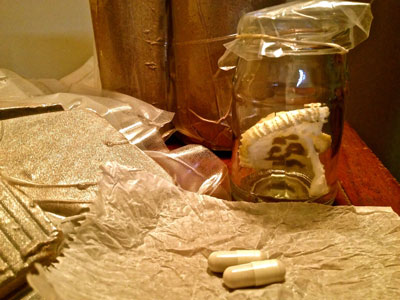
It's not Nosara's intention to sell out, but with the amount of foreigners coming, it may have no choice. When I speak to the ex-pats living in or around Guiones Beach (which the locals now jokingly refer to as "Gringo-nes") about Nosara's future, opinions are divided. Some say the city will never become a cash-grab like Jaco or Tamarindo, the popular and heavily marketed nearby tourist destinations; others insist that, in some ways, it already has. What is for sure is that Nosara has been so effective at attracting the interest and money of those who have visited that there are well-founded concerns that corporate interests may infiltrate the bohemian refuge in order to commodify it, market it and pimp it out to the vacationing masses. This has left Nosara in a delicate position, where the biggest challenge facing the city as it undergoes further development is to continue growing on its own terms.
Looking down the long stretch of beach at Guiones, it seems perfectly logical that a chain hotel or resort would want to develop there. The existing developments are mostly privately owned stand-alones that are no taller than three stories and scattered haphazardly around the two looping crescents that come off the main road. They're a physical testament to the spontaneous and unplanned nature of Nosara's development. Even the newer commercial strip that's opened feels somewhat out of place. It's too polished, too deliberate.
When I ask Dave, an American tourist who has been doing summers in Nosara since the ‘90s, whether or not he thinks the city is at risk of losing itself to the influence of money, he takes a sip of his cocktail, smiles out of the corner of his mouth and half-jokingly says, "Well, you're here on vacation, aren't you?" This neatly sums up the paradox of the city: Nosara depends on tourism to support the local economy, however tourism also represents the greatest threat to Nosara's identity.
"If you want to be accepted out here, you can't be about the money," says Daniel. He's the owner of Guiones Adventure Tours, a business down the street from my hotel that arranges excursions for tourists and rents out ATVs. I've come to sort out an extension on my ATV rental and through the course of conversation, we've ended up on the topic of how Nosara can continue to develop without turning into a parody of itself.
"The thing is, no one is out here to make money. I mean, you make enough to survive and to get by, but no one who's set up out here is trying to become wealthy off of Nosara. If they were, they wouldn't be accepted by the community."
He explains to me that this is the city's saving grace, and for the most part, I have to agree with him. The overarching ethic of the local business community seems to be that you work enough to eat and surf, and anything beyond that is a bonus.
Nosara may be able to hold on to its identity because the community of people living here aren't interested in getting rich. Daniel explains: "Most of the people here are already really very well off when they get here, or they come here because they want to surf and get away from the 9-5 bullshit back home, where the lifestyle revolves around money."
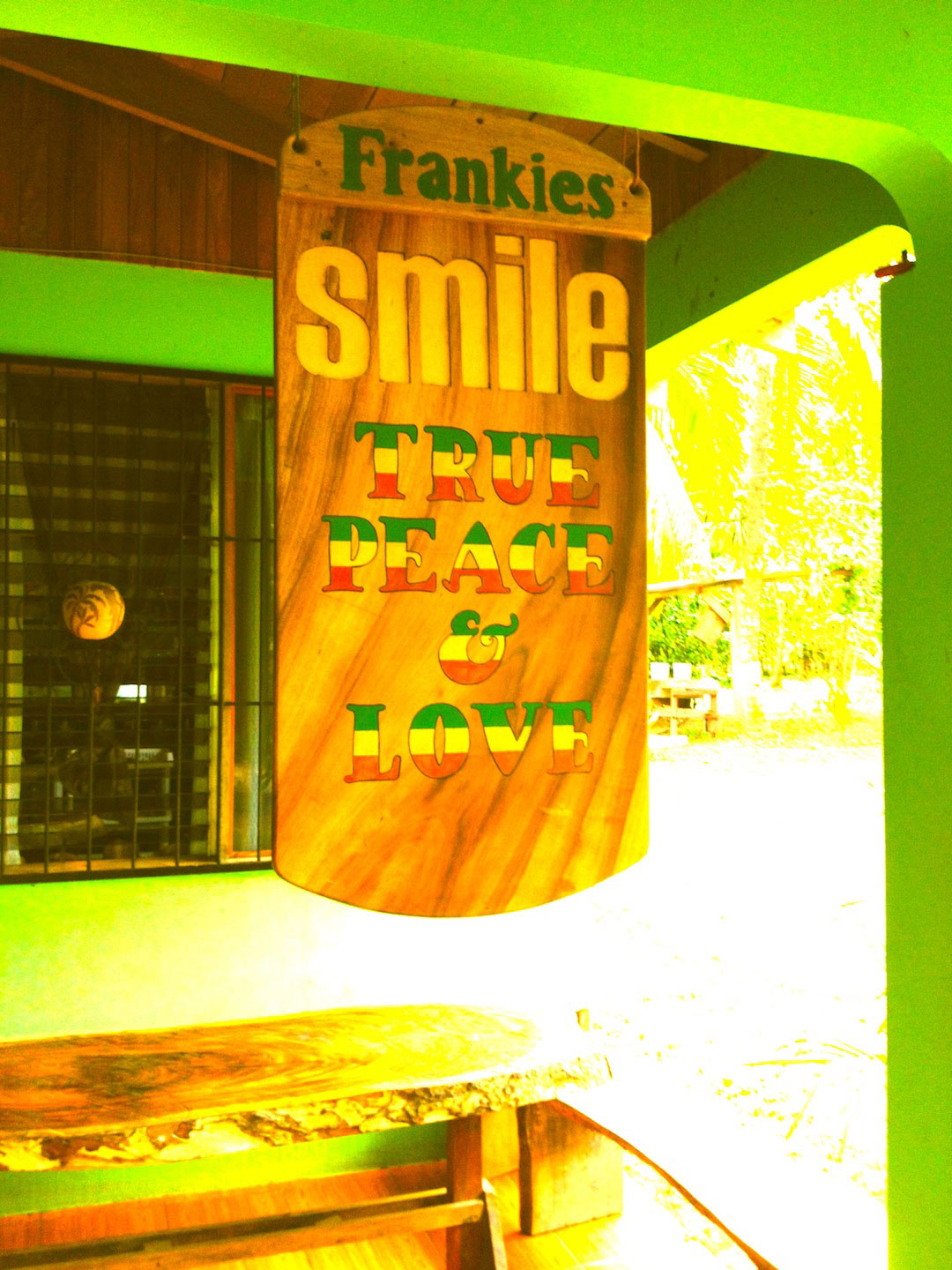

Franklin's intentions are to spread love, happiness and health through the cultivation and sale of raw foods. Ask him what he's about and he'll deliver a 60-mile-an-hour, stream-of-consciousness monologue about his goals, values and the processes he uses in the preparation of his products. It's an overpouring of pride and enthusiasm that doubles as a sales pitch. When he speaks, the words "natural" and "pure" fall from his mouth in the same way you would expect "like" and "um" to come from teenagers.
"For me, being a Rasta, it's important to recognize that your body is your temple and also to live a natural life that doesn't destroy or harm others. From the Earth, you can be self sufficient. This is the most important thing: living a life that is respectful of others, yourself and nature — to live pure."
How Franklin came to be practicing this philosophy is a story of a man being in the right place at the right time.
"The first thing I made was coconut oils," he tells me. "I perfected this process that removed all the sediment from the oil so that it was really pure, and then I would bottle it and drive down to Guiones beach and walk the beach selling it to the tourists there."
Nosara mainly attracts two specific types of tourist: surfers and neo-spiritual naturalists. They come, sometimes for months at a time, in search of themselves, the universe, a good wave and anything else that isn't readily available back home. Walking among these people, Franklin had, by a fluke, stumbled into his perfect target market. The average tourist at Guiones Beach was more than likely part of the Sunday morning Whole Foods crowd — people who had the inclination and resources to want to live a more enlightened lifestyle. Purchasing Franklin's oils represented an opportunity for them to achieve the next level of authenticity in their pursuit of a holistic consciousness. It was as direct to the source as they could get. The coconut oil sold out instantly, and with the pressing of every fresh batch, continued to do so.
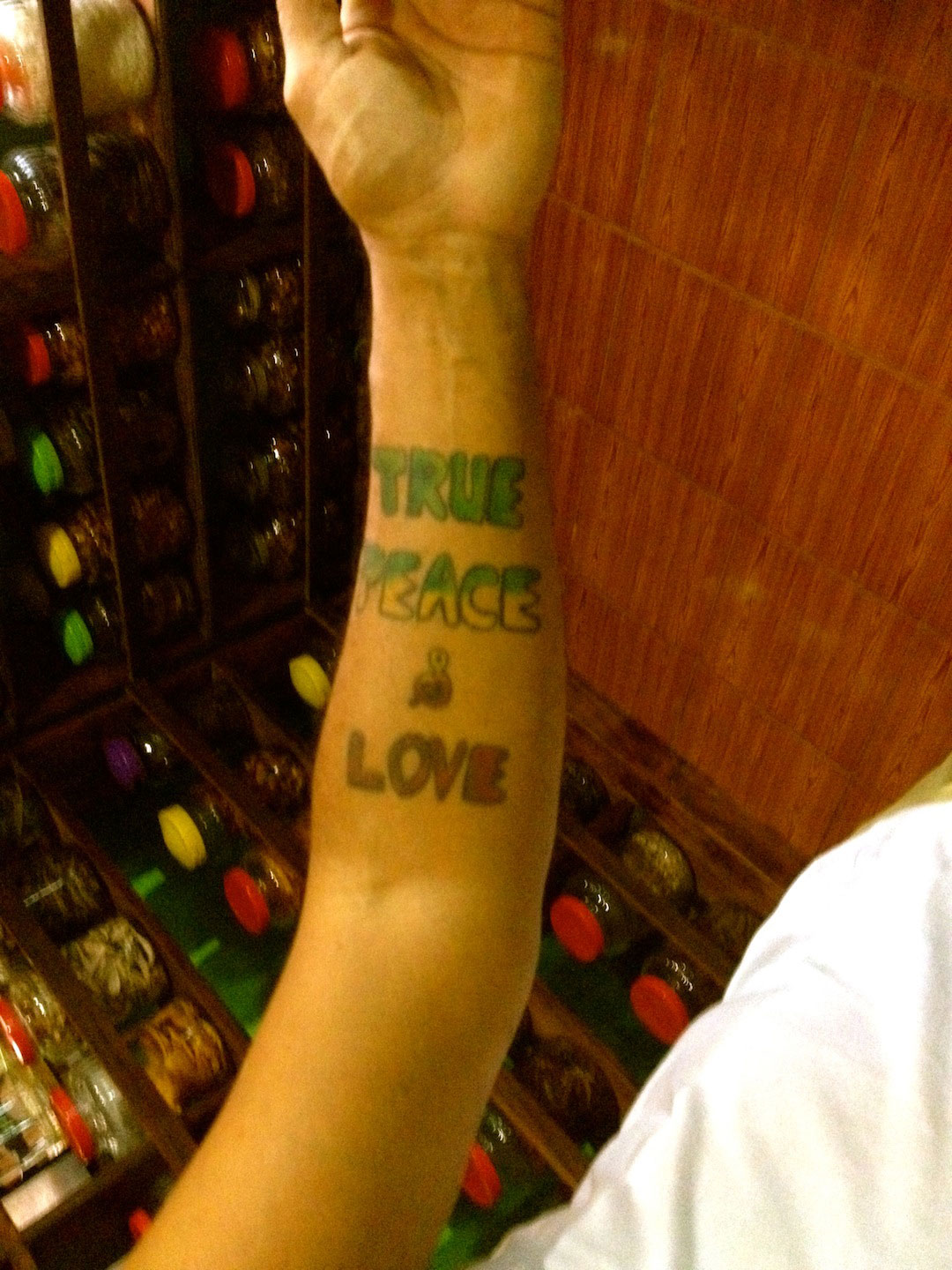

It was around this time that Franklin started having a spiritual awakening to the teachings of the Rastafari.
"I was very sick. It was my digestive system and my whole body. … It felt like I was shutting down. I would get anxiety, and some days I couldn't get out of bed. I quickly realized that even though I was making money, without my health, I had nothing. This was when I realized money couldn't bring me happiness. I needed health."
At this point, Franklin did not identify as a Rasta. He had always been very into Bob Marley and was always aware of the religion, but it wasn't until he became sick that the words in the songs and interviews he studied over and over again started to take on new meaning. Encouraged by the Rasta emphasis on natural living, he expanded his business into organic farming and started to incorporate raw foods into his own life as a way to heal his body.
"The two aspects really started to feed off each other. The lifestyle encouraged me to research deeper into Rastafari, and the Rastafari encouraged me to push the lifestyle forward. I would read more and more, and get deeper into the farming and religion until the two things just became part of the same thing."
After rejecting the slew of pharmaceutical treatments he was prescribed in favor of a lifestyle change, Franklin started feeling better. His involvement with Rastafari increased, and he started to identify as a practitioner of the religion. Today, it's an essential part of who he is, a fact you are immediately aware of when approaching his storefront home. There's no signage advertising the location. It's not mentioned on any maps and the road it's on is unmarked, but you can't miss it. Just drive toward Ostional from Guiones and look for the large wooden gates on the left-hand side of the road painted in red, gold and green.
I have no idea how long I have before the cap kicks in.


It's getting close to sunset, and I have plans to be at Ostional to try to catch a glimpse of the turtles who are laying their eggs there. I'm not guaranteed to see anything, but I figure it's worth a shot. While at the bar at Kaya Sol, I joke that I may be ready to drop the 9-5 and move to Nosara on a permanent basis. One of the patrons takes me seriously and says, "I can tell you how you do it". His name is Serafin. Back in New York, he used to do freelance television camera work for shows like Letterman and major sporting events like the U.S. Open. Now, like almost everyone else at the bar, he's just another American living in Nosara.
"The way you do it is: When you enter the country, they issue you a 90-day visa. It's really easy to get because they want you to come and spend money in the country. So you use your days until you get to day 88 or 89, and then you take a three- or four-day mini-trip to El Salvador or Nicaragua. When you come back into Costa Rica after the three or four days, you get a new 90-day visa and you're good again. You can just do that over and over as much as you want."
In between drinks, we continue to chat. As I ask him questions, I play around with the cap of Iboga in my pocket, trying to decide if now is the time. I move it back and forth over my fingers while he tells me about why he chose to move to Nosara. His answer is typical here: He was tired of working everyday to buy shit he didn't really need in a cycle of consumerism that ultimately added no real value to his life, so he decided to try something different.
"You know, I don't know what it is about this place, but you just feel happier, healthier. You have better priorities out here, ya know?"
I listen to him, agreeing. When he looks away, I get the cap out of my pocket and into my mouth, washing it down with the last bit of my cocktail. Nosara does have a rejuvenating effect.
I say bye to Serafin and head out on my ATV to Ostional. I have no idea how long I have before the cap kicks in.
… unity, peace, love, anti-consumerism, anti-materialism ...
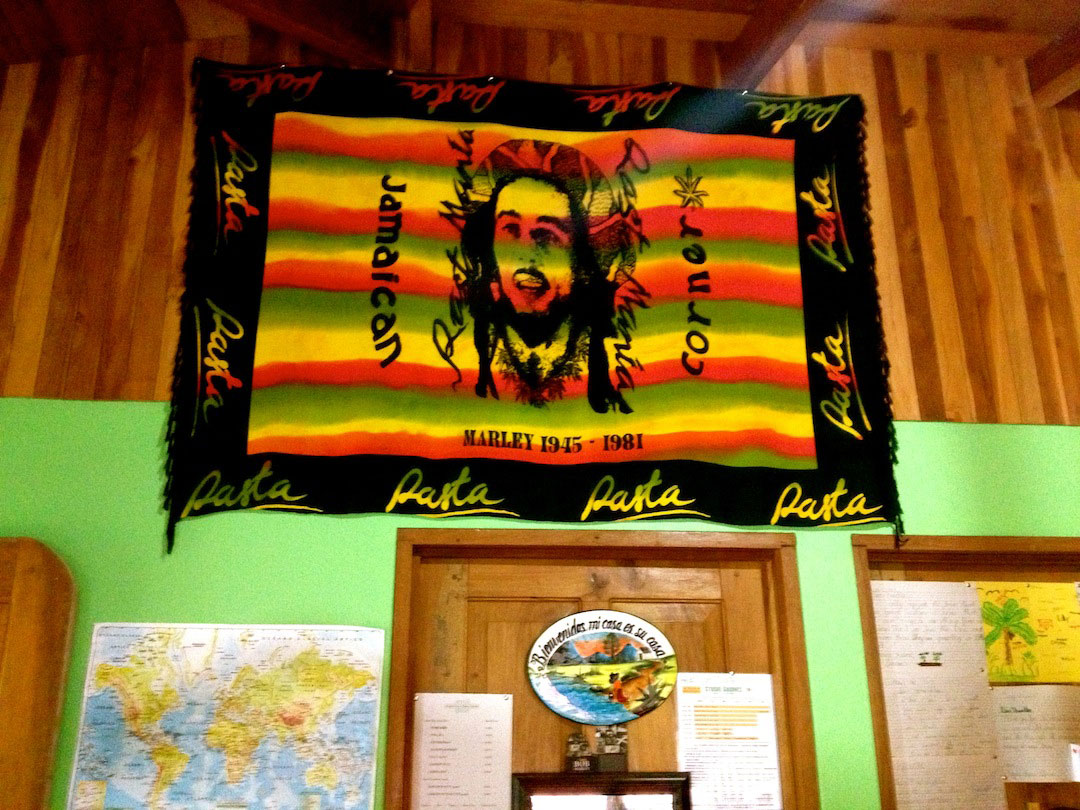

If I say the word "Rasta" and the first (possibly only) free associations that come to your mind aren't marijuana, Bob Marley and reggae, then you're probably black, live in Jamaica and are actually a Rasta. Since the religion began in 1930s Jamaica as a counter-culture movement based on the social and political teachings of Haile Selassie, its imagery and language have been co-opted by various subculture's music, art, sports and fashion — most likely as a way for those subcultures to legitimize their standing while also expressing some kind of ornamental solidarity to their assumed common values: unity, peace, love, anti-consumerism, anti-materialism and a general rejection of the mainstream.
In a strange twist, the one aspect of Rastafari belief that doesn't get repackaged and repurposed as often as the rest is the one most historians would probably argue is its most central: its afro-centric, pan-african socio-political message. A cynic would probably say that this is because it's easier and more profitable to sell groovy ideas like love, peace and unity to white teenagers when it isn't packaged with a pro-African consciousness that disparages white "Babylon" culture. Whatever the reason, the effect over time has been that the perceived values of the religion have shifted as the first (and sometimes only) exposure North Americans have to Rastafari are decontextualized, second-hand interpretations delivered by musicians, pro-cannabis advocates and fashion outlets.
Take a walk through the circus at Venice Beach, pop into your local headshop or visit almost any boardsports or music store, and you're likely to see the red, gold and green of the rasta alongside anarchist patches, keffiyeh and designer crucifixes. The fashion of religion has always been a popular go-to for angsty teens and 20-somethings looking to decorate themselves with instant meaning, and the imagery of the Rastafari is no exception.
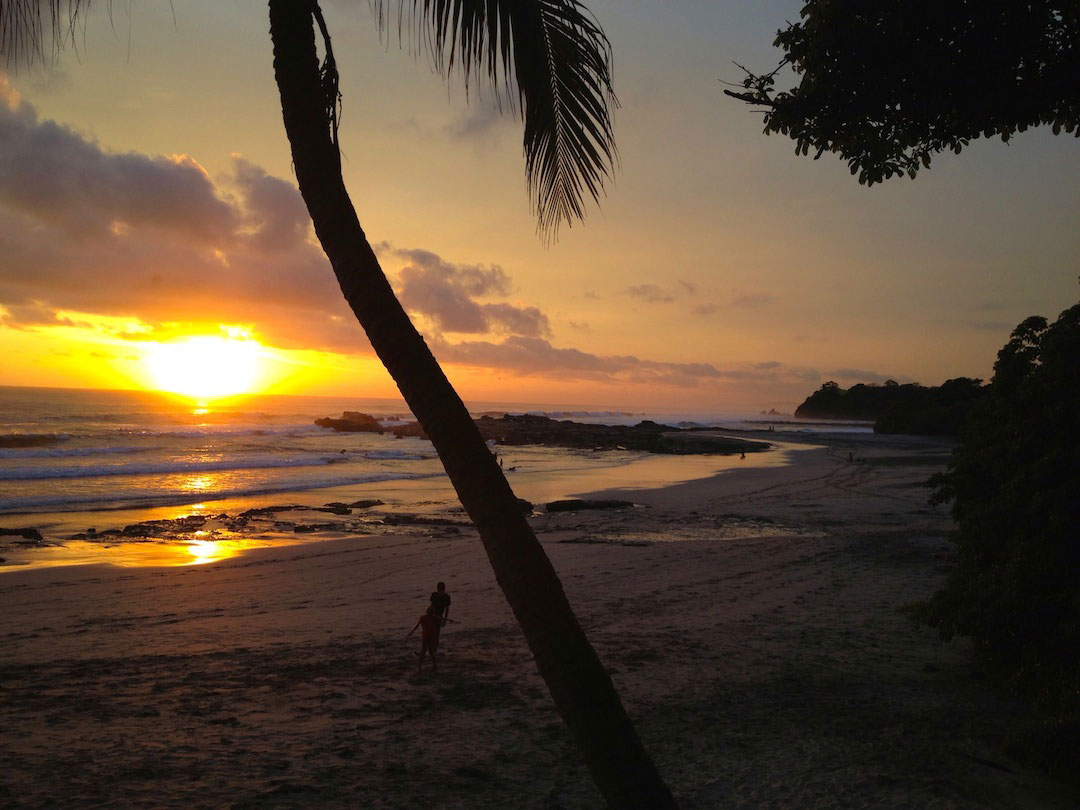

In Nosara, the name Haile Selassie carries no special weight among the locals or foreigners, however the trademark colors of the religion that celebrate his divinity are almost ubiquitous. This is because Nosara is a surf town. In the 1980s, Stüssy was wildly successful pushing clothing that used not only the colors of the Rasta (which were originally taken from the Ethiopian flag), but also the language. Shirts with script explicitly referencing "Jah," "the tribe" and "peace, love and unity" were sold en masse to those in California's surf culture, helping to popularize the brand. Today on the beaches of Nosara, the majority of surfers (and people in general) wear some form of the red, gold and green, and while it might be presumptuous to assume that these white tourists aren't actually practicing rastas who fantasize about an uplifting and unifying repatriation to Ethiopia, the likely truth is the depth of their sympathy for Rastafari probably doesn't extend beyond smoking weed and listening to reggae.
… I don't have the authority to tell another man what he is.
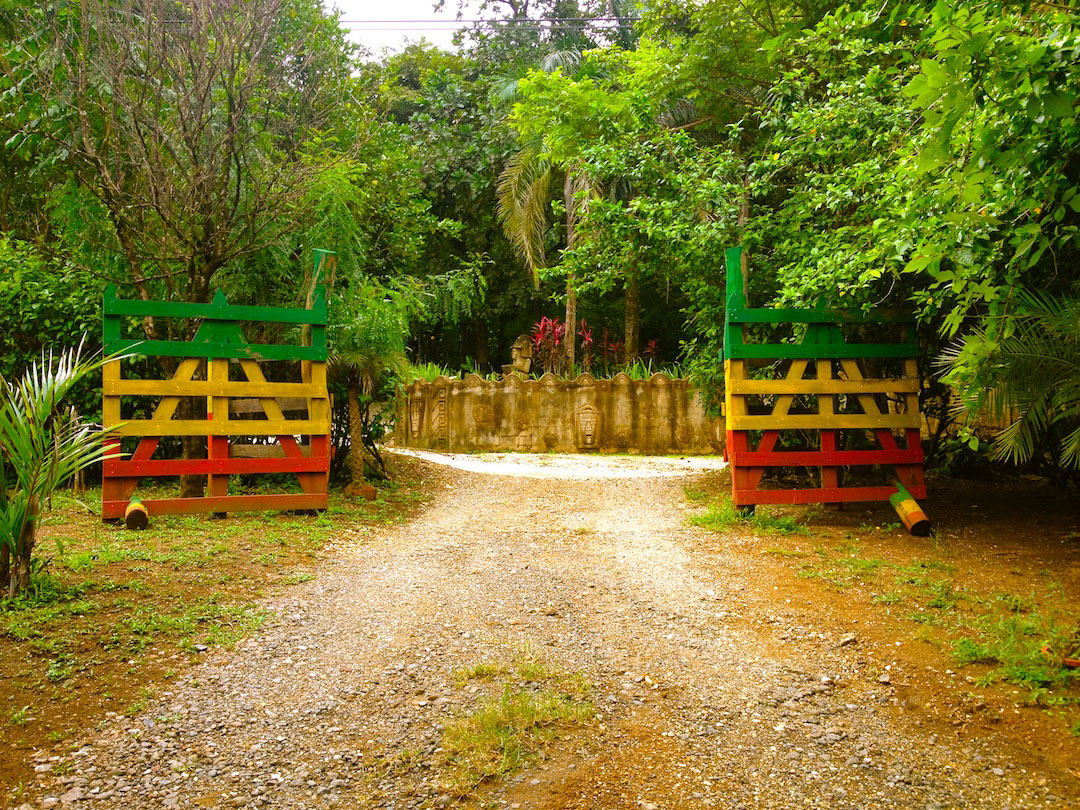
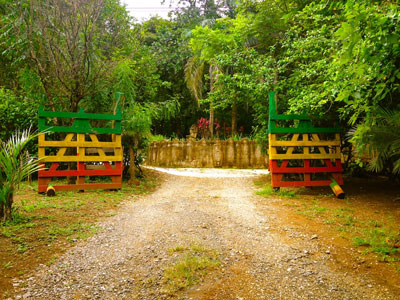
"People here don't know about that part of it," Franklin tells me, referencing the socio-political history of the Rastafari.
"They don't do the research. They either see how other people are doing it and follow the example or they take their example from Bob [Marley] or from bits and pieces here and there, whatever they see."
When I ask him about how he feels about people using Rasta imagery as a counter-culture fashion statement, he smiles and tells me that everyone has to start somewhere.
"Being a Rasta isn't something that just happens, it's a process. For me, in my practice, I'm still in the process of becoming more righteous."
Franklin also acknowledges that there are other Rastas who would dispute his interpretation of the Rastafari religion. He openly admits that his is a more contemporary practice that pays greater attention to the religion's lifestyle philosophy than it does to the political views articulated by figures like Haile Selassie and Marcus Garvey.
"I do eventually plan to go back to Africa. But not now. First, I want to get what I'm doing here right, really grow my knowledge, so that when I go back, I can bring that knowledge with me. That's the most important part for me … to spread this, to spread health and happiness and connection to the Earth, to show people that this is something anyone can do."
There are aspects of Franklin's Rasta beliefs that are unconventional. He doesn't have dreadlocks, for example, because he doesn't believe it's a necessary part of the religion. He uses Iboga as a spiritual medicine even though it isn't commonly associated with Rastafari in the same way cannabis is. He also recognizes Bob Marley as the model for his lifestyle more so than Haile Selassie, even though he says he recognizes Selassie as Jah.
"For me, Bob was how I came to be involved in Rastafari, and he is my model, the way he lived his life is how I look to live my life."
Franklin also recognizes the legitimacy of others who have adopted a contemporary Rasta practice that places little to no emphasis on the political dimensions that have historically defined the religion. This includes several of the white locals in Nosara who either identify themselves as Rasta supporters or practitioners, including Yuri, the blonde dreadlocked American ex-pat who introduced me to Franklin.
"For me, it's more about your lifestyle, how you respect yourself and others and the Earth," Franklin explains. "I can criticize others and say that particular things that they do aren't things that they ought to if they're truly Rasta, but ultimately I don't have the authority to tell another man what he is."
My intention is to not be obvious.
I am almost ready to write off the Iboga when I suddenly realize how intense the lighting of the restaurant appears, how very present the sound of the conversations around me have become: a thick wall of distinct voices overlapping into a unified hum of white noise.
Dinner is almost over, but I am in the middle of a friendly conversation with a bar patron that I no longer feel inclined to continue. I feel lucid, like my thoughts are very clear, calm and focused, but I feel no need to share them. After politely excusing myself and paying the bill, I head to my ATV.
Without the aid of any streetlights, the roads of Nosara (if you could call them roads) reveal themselves only 10 feet at a time under the headlights of my ATV. They are unpaved stretches of dirt and rock, littered with potholes, deep ridges and large puddles. Any error in estimation of where your tires need to be to avoid these hazards would surely result in disaster. My mind is blank to the point of meditation and sharply focused on the terrain in front of me, as I direct my vehicle to move as required at 40 miles per hour. I'm on autopilot. The only part of my surrounding that I consciously register is the sound of the wind whirring past me, blotting out all other sound as though amplified through loudspeakers, and the metal posts lining the bridge on the way to Ostional. They blur by me in hazy smears of red, gold and green.
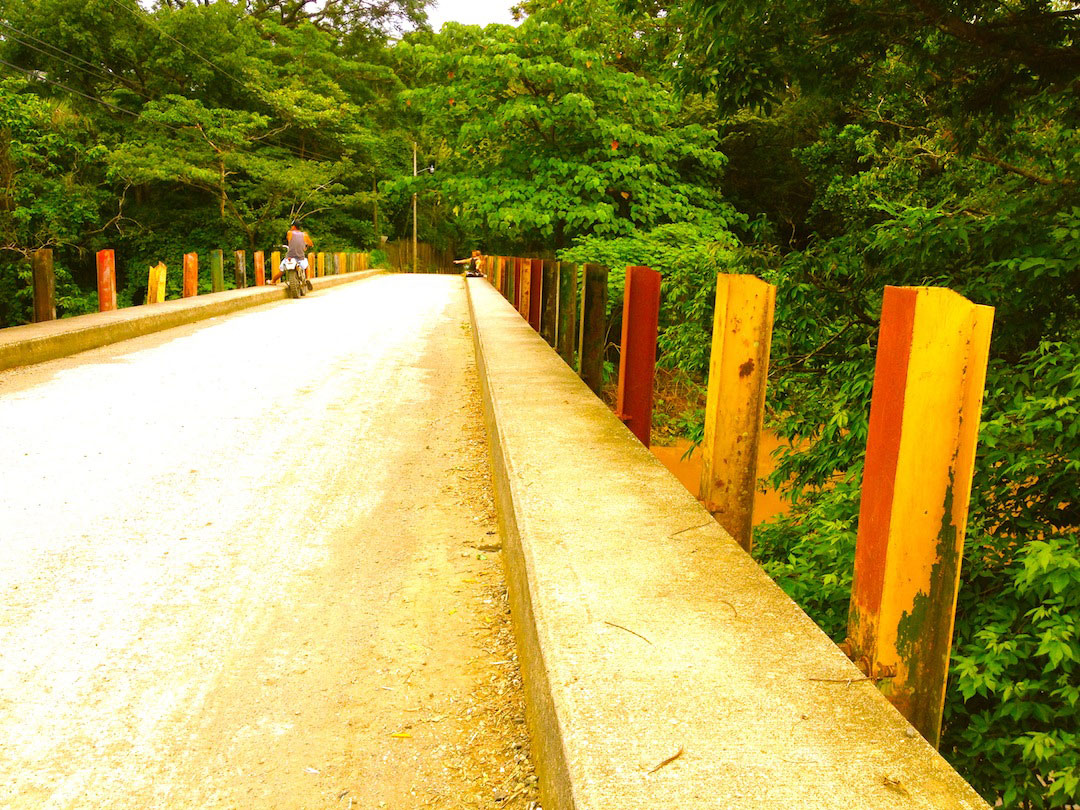
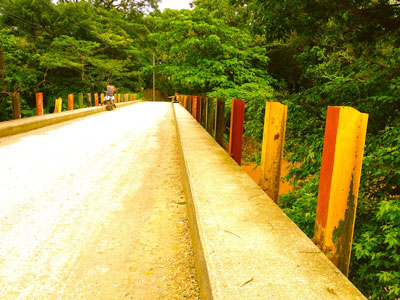
All images courtesy of the author.
Misha Narine is a freelance writer and poet. His work has previously appeared in Street Carnage and Platform U.K. He lives in Toronto, Canada. Contact him at MishaNarine@gmail.com.